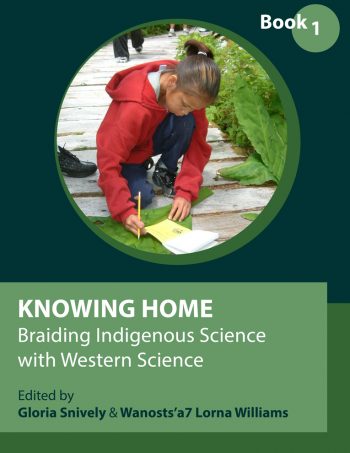34 OER Content
Josie Gray
Press play on the following media player to listen to the podcast version of this chapter or read the text below.
Topics covered in this section
Let’s talk about content, what is actually in these resources? What are they teaching? What knowledge is being represented and how? Are diverse people, perspectives, and experiences visible, and if so, how are they portrayed?
This question of content is one that I am currently finding the most interesting.
OER as content
In open education, there is a lot of focus on how OER can increase access to education. This makes sense, especially when comparing OER to commercial textbooks. OER are digital (which makes them easy to share) and free. Anyone with a device, internet access, and the knowledge of where and how to search can find and use these resources. However, putting something up for free online does not mean a resource benefits everyone the same, and I’ve been finding quite a lot of literature critically looking at OER as content.
Some of this critique questions the presumed value that OER advocates put on “access to information,” that by putting information for free online in the form of OER is making the world a more equitable place by increasing access to education. People making this critique are referencing the rhetoric used to promote OER as having a value globally and benefiting people in “third-world” countries who can access the resources for free.
Do OER make the world “flat”?
In 2005, Thomas Friedman published a book called The World is Flat. This book argues that the rise of the internet and access to personal devices has “leveled the playing field” in the world’s economy, meaning that everyone has equal opportunity, regardless of where they live.

Andreia Inamorato dos Santos (2008) takes this metaphor of “flatness” and asks if access to knowledge (through OER) helps “flatten” the world and make it more equal for everyone. She argues that Friedman’s argument is a fallacy because it does not consider broader economic and cultural factors, and that this fallacy can be found in the open education movement. She writes:
There is no consideration of the resources and skills that are essential at the very minimum to benefit from OERs, such as the access to a computer connected to the internet and a level of computer literacy that would enable the individual to search for these resources on the web… Access to content is good, but access to content that is meaningful, didactic and localised could be even more useful for the ones who truly lack education opportunities (p. 8).
Andreia’s argues that access to knowledge alone does not make the world a more equitable place. It matters what language the material is written in, it matters if the content is appropriate to an individual’s context, it matters what options a person has to access that content.
In 2013, Jeremy Knox published an article titled, “The limitations of access alone.” In this article, Jeremy criticized the open movement’s focus on “access to material,” and the common practice of portraying knowledge as “immune to the influences of digitization, interpretation or cultural understanding.” He points out that at that time, most OER were being published in the United States or Europe, so while access to that knowledge was free, it was specific knowledge written for a specific context, and access to open knowledge creation itself was still very limited.
Open content ≠ equitable content
To bring it back to a North American context, there is also the question of whether the content in OER being produced is inclusive and equitable. With all the rhetoric about how great OER can be for improving access to information, it is easy to overlook the many ways that OER reproduce inequalities found in academia regarding knowledge production, assumed authority and expertise, and white supremacist, colonial narratives and perspectives.
Example
A concrete, obvious example I can provide from my own experience is an English literature textbook I worked on that included a lot of literature that is now in the public domain. While I was working on importing the requested pieces into the book, I noticed one of the stories included repeated use of the n-word. Then I took a closer look at the story and a few others and found numerous examples of racist, violent language and perspectives. These stories were provided with no content warnings or critical framing. Instead, they were put forward as examples of narrative writing style or character development or whatever else. I pushed back on the inclusion of that story and the author agreed to remove it, but it really woke me up to the fact that the content in OER can play a critical role in inclusion or exclusion.
I think it’s fair to say that not including racist literature in an English class is a low bar.
Indigenous knowledge
To raise that bar would be to take a critical look at whose knowledge is being represented and how. These questions can be applied to race and culture, but they also include gender and sexuality, class, language, family structure, ability, and other forms of human difference.
 And these conversations are happening. For example, there is a growing push to include traditional Indigenous knowledges in curriculum. One example is an open textbook titled Knowing Home: Braiding Indigenous Science with Western Science. But while people writing and publishing OER are often eager to “Indigenize” their content, it is not straightforward. For one, the way many Indigenous communities understand knowledge preservation and ownership is fundamentally opposed to colonial understandings of copyright and authorship.
And these conversations are happening. For example, there is a growing push to include traditional Indigenous knowledges in curriculum. One example is an open textbook titled Knowing Home: Braiding Indigenous Science with Western Science. But while people writing and publishing OER are often eager to “Indigenize” their content, it is not straightforward. For one, the way many Indigenous communities understand knowledge preservation and ownership is fundamentally opposed to colonial understandings of copyright and authorship.
In addition, copyright law and colonial definitions of intellectual property have been used to steal and appropriate Indigenous stories and knowledge, which has caused a lot of harm. To address this gap, the Local Contexts project worked on developing a series of Traditional Knowledge Labels to help communicate existing protocols for access and use of cultural heritage materials.
To learn more about Indigenous knowledge in the context of publishing, I would recommend reading Rachel Taylor’s article titled, “Gathering Knowledges to Inform Best Practices in Indigenous Publishing,” published in 2020. To learn more about Indigenous knowledge and Canadian copyright law, you can read “Indigenous Knowledge and the Question of Copyright” on the Indigenous Corporate Training Inc. website (author not listed).
Adaptation for inclusion
Another approach that people have taken to make OER more equitable is targeted adaptation. Adaptation is when you take an existing OER and edit it to fit your needs. One example I have found was a project to edit a Psychology open textbook published by OpenStax.
Because OER are under licenced in a way that allow others to edit them, the goal of this project was to edit this Psychology textbook with the specific lens of diversity, equity, and inclusion. Using a crowdsourcing approach, “contributors were asked to read areas of the textbook they were comfortable with and make suggestions to diversity the content.” Then the author took those suggestions and edited the textbook based on that feedback. This project ultimately found that the first-generation students who read the diversified chapter felt a greater sense of belonging than those who read the original chapter.
You can read more about this project in an article by Amy Nusbaum published in 2020 titled “Who gets to wield academic Mjolnir? On worthiness, knowledge curation, and using the power of the people to diversify OER.”
And that’s the end of this section on content. Thank you for your attention. You are welcome to go explore one of the other sections or skip to the end to review the conclusion. If you have any thoughts you’d like to share with me, please do reach out.
References
dos Santos, A. I. (2008). The discourses of OERs: How flat is this world? Journal of Interactive Media Education 1(no.11). CC BY. http://doi.org/10.5334/2008-11
Indigenous Corporate Training Inc. (2019, Oct 8). Indigenous knowledge and the question of copyright. Working Effectively with Indigenous Peoples. https://www.ictinc.ca/blog/indigenous-knowledge-and-the-question-of-copyright
Nusbaum, A. T. (2020). Who gets to wield Academic Mjolnir?: On worthiness, knowledge curation, and using the power of the people to diversity OER. Journal of Interactive Media in Education, 2020(1): 4. https://doi.org/10.5334/jime.559
Taylor, R. (2020). Gathering knowledges to inform best practices in Indigenous publishing. A Review of International English Literature 51(no2-3). https://doi.org/10.1353/ari.2020.0015
Media attributions
- Flat World © Dawn Hudson is licensed under a CC0 (Creative Commons Zero) license.
- “Knowing Home cover” © Gloria Snively and Wanosts’a7 Lorna Williams is licensed under a CC BY-NC-SA 4.0 License. The cover feature image : “Student Measuring Skunk Cabbage” © Edōsdi Judith C. Thompson is licensed under a CC BY-NC-SA 4.0 License.
A mistaken belief, especially one based on unsound argument.

